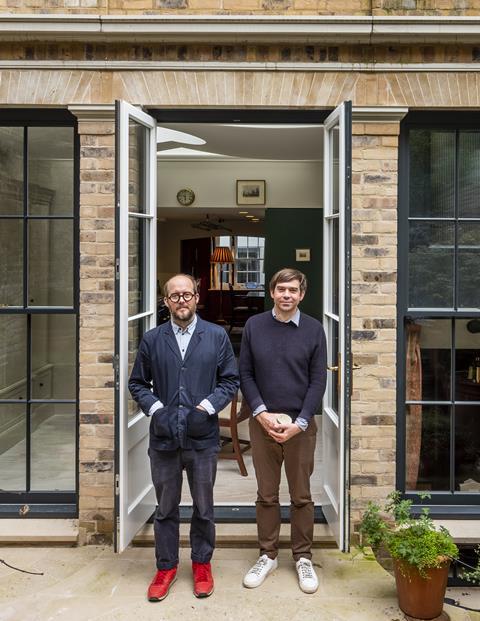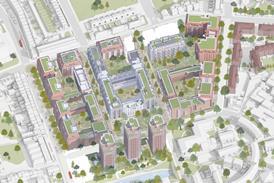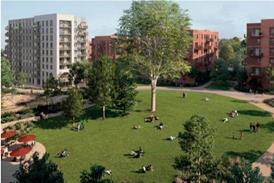Architects and educators Timothy Smith and Jonathan Taylor reflect on fourteen years of their pioneering traditional design studio at Kingston University, and make the case for classical architecture as a vital part of contemporary architectural education

In 2011 we established the first traditional design studio in a RIBA-accredited mainstream educational institution for over 80 years. At Kingston University, alongside an exceptional range of practitioner-led design studios, we have pioneered a course of traditional design study that embraces multiple approaches. Initially teaching in the RIBA Part 1 course, and since 2013 in the Part 2, we have used the poetry and typology of the orders, the logic of local construction techniques, and the study of notable precedents to expose students to the range of possible classical expression from high to low.
We coined the term “marginal classicism” as the title of one of our first classical studio briefs, and we continue to use it to describe our position. It reflects our avoidance of dogma in favour of moderation and careful judgement, as well as our fascination with classical architecture that is attuned to its place, its programme and its time. It also speaks to the poetics of construction, and to our desire to situate the work of both our own London-based architectural practice and our teaching studio firmly within a broader contemporary debate.
In 2022 we were awarded the prestigious ICAA Arthur Ross Award for excellence in the classical tradition (education category) in New York City, and in 2021, the RIBA Traditional Architecture Group’s Achievement Award in recognition of 10 years teaching the classical language. Frequently students express their relief to us at having found a place to develop their interest in traditional architecture, having thought it was not available, or worse, after having been mocked or denied serious attention by prejudiced teachers during their Part 1 course. In a heartfelt correspondence, one graduate expressed gratitude that the studio had enabled him, for the first time, to “read” cities.
Later this year a book will be published celebrating our students’ achievements and featuring design and research projects, reflective essays by ourselves and others including our students, and an interview between us and the director of the Architecture Foundation, Ellis Woodman.
Importantly, the studio is no less valuable for students who ultimately choose not to design using the classical language, as it provides a firm educational foundation for any architect and allows students to develop thesis projects that are distinctive in their expression and resolution. Graduates who are interested in a career in traditional architecture frequently find work with pre-eminent practices such as Craig Hamilton, Ben Pentreath, ADAM Architecture, Stanhope Gate and John Simpson, as well as overseas.
Our approach is rooted in a classical conception of space and hierarchy, along with a respect for the continuity of proven and relevant architectural and urban planning principles
Those who have chosen more mainstream offices have reported that their portfolios were received very positively, with employers noting the high level of design and technical resolution, as well as the quality of their drawings, models and image making. They certainly stand out against others.
It is common in architecture schools for year cohorts to have a choice of a variety of design project studios, each led by tutors who have a particular interest or specialism. At Kingston we lead one of eight different MArch studios, each with approximately 16 students. Our students often select their studio for both of the two years of the course and write on a traditional subject for their dissertation, effectively graduating with an RIBA Part 2 in traditional architecture. For the most part, though, students spend one of their two years with the studio, integrating classical architectural and planning principles into their mainstream degree course.
Naturally, traditional working methods such as hand drawing and watercolour are welcomed. But it is important to us that the only real difference between our studio and others is that we teach the orders and their application to design. Our approach is rooted in a classical conception of space and hierarchy, along with a respect for the continuity of proven and relevant architectural and urban planning principles. This ensures that our attitude cannot be dismissed as nostalgia, and that it has something meaningful and plausible to contribute to the culture of the Department of Architecture & Landscape and beyond.
We are currently also visiting scholars at the Catholic University of America in Washington DC, which has its own classical “concentration”, and recently established a partnership between the two schools enabling international student exchange and collaboration, including a summer studio at Kingston and an innovative international thesis studio in traditional design for Kingston and Catholic University final-year students.
While the growth of opportunities in traditional summer schools and occasional talk of new traditional schools of architecture are to be wholeheartedly celebrated and encouraged, the presence of a well-established classical studio in one of the oldest RIBA-accredited schools in the UK is something remarkable. We are committed to supporting young architects who wish to enter teaching and academia to ensure that their hard-fought achievements may be available for generations of students to come.
If any readers feel able to support this endeavour financially, then we would be very pleased to hear from you, and if you’re a potential Part 2 architecture student, do consider an application.
>> Also read: From complexity to clarity: The Sainsbury Wing transformed
>> Also read: Is the lack of ornament in architecture a barrier to diversity?
Postscript
Timothy Smith and Jonathan Taylor are founders of Timothy Smith & Jonathan Taylor Architects. They teach a classical architecture unit at Kingston University.
This is an edited version of an article that was previously published by Create Streets.
















4 Readers' comments